July 7, 2025
Blank Yard to Wonder-Filled Gardens

Architects Richie and Nkiru Gelles applied muscle, imagination, and patience to turn their bare backyard into a lively habitat. On a typical day, their young sons spot lizards, admire butterflies on native plants, and grab a snack from seasonal herbs and vegetables.
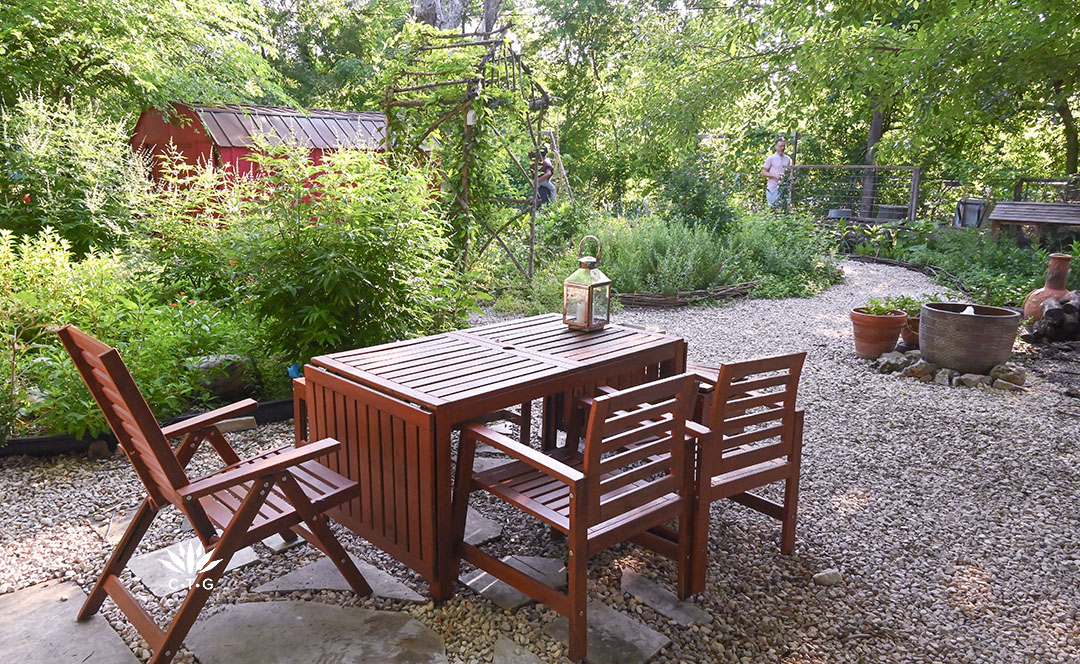
When they bought the house in 2017, the yard was a rather overgrown jungle. “Each year we would reconquer a certain section of our garden and then suddenly, okay, we’re cultivating this now,” Richie told us when we stopped by in May.
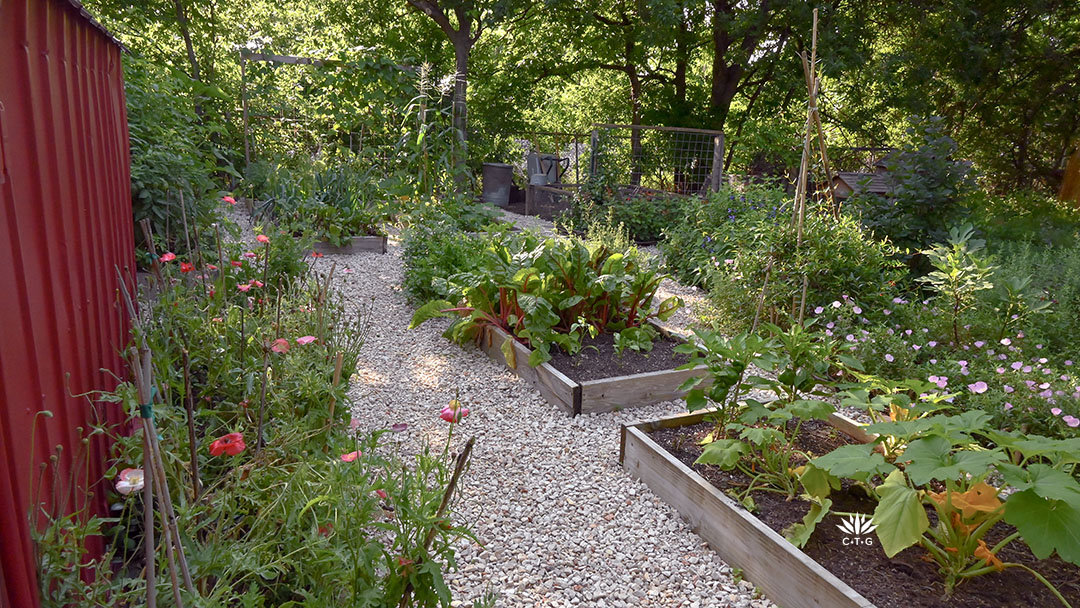
“Neither of us had previous experience tending to something that was so big and wanted to create something that was a place for our boys to play. And ultimately we just worked on it section by section,” Nkiru added. First, they collected and purchased cardboard to cover and smother the weedy vegetation. Then Nkiru ordered a serious load of gravel and they spent their free time behind wheelbarrows to haul it to the backyard.
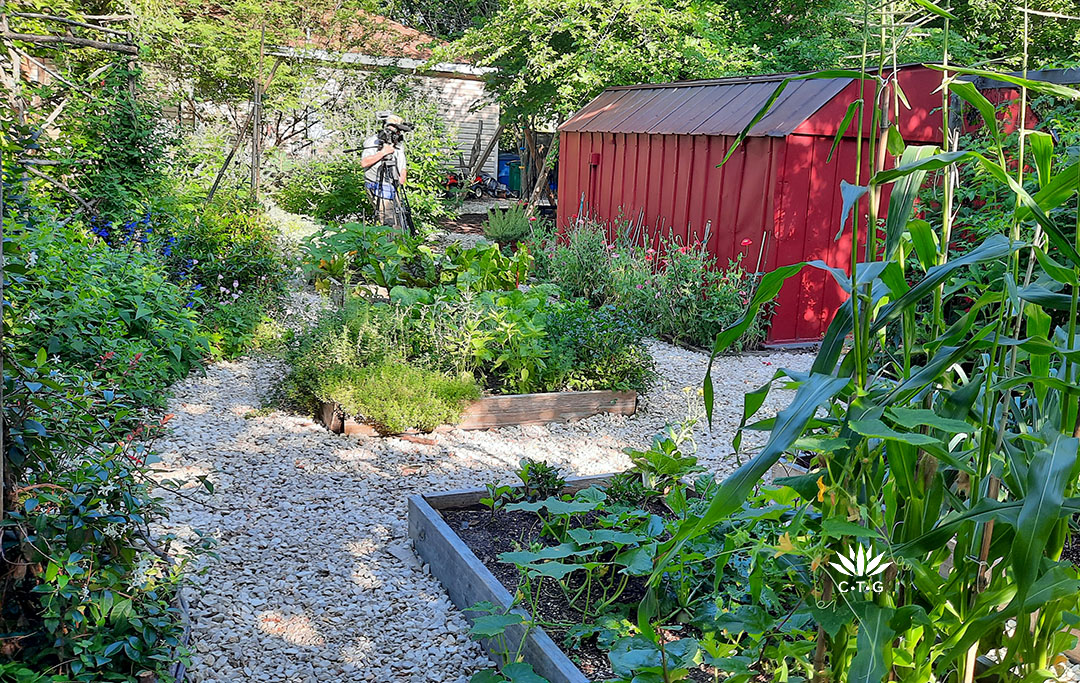
“The paths helped define areas that could make it more manageable for us to like, okay, we can plan out the planting here. We can weed this bed,” Richie said. Then, he built the walk-around raised vegetable beds for year-long harvests.
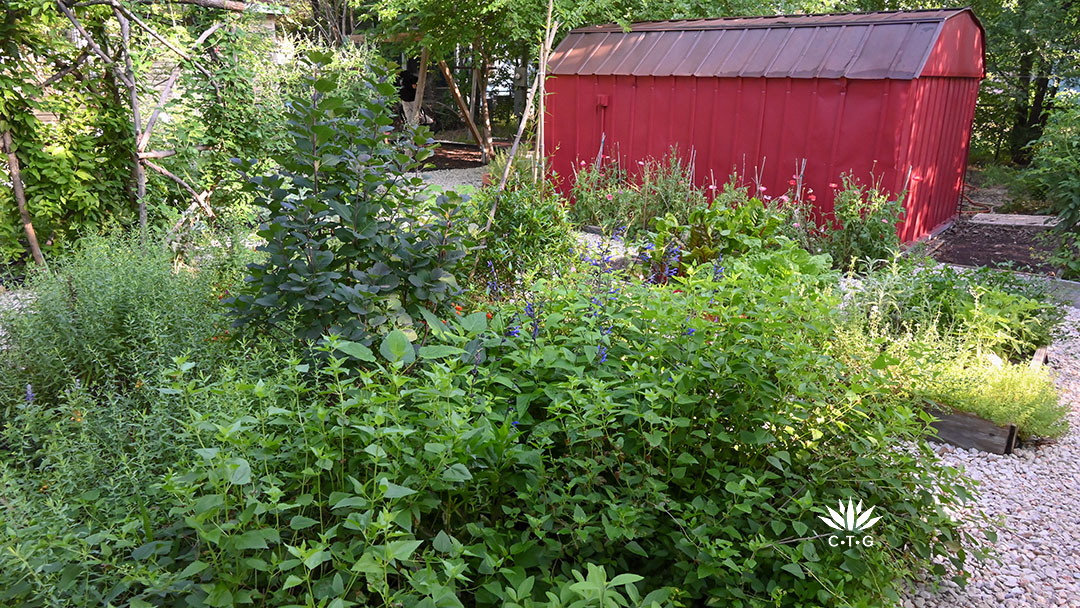
Richie and Nkiru are both architects who also like to dig into soil. Nkiru, a principal and architect at Low Design Office, is also the President-Elect of AIA-Austin. Richie is the Creative Director at Playhou.se Animation.
“And so with with all the planting, we’ve always been aware of creating a profile, which I think is a sort of an architectural move, I guess, where we are careful to think about what’s going to be high in the middle, what’s going to be low around the edges, but then also the textures of the plants, the shapes of the leaves: if they’re sharp and pointy or rounded and soft. “And always trying to create a very frothy, frothy feeling that you can not really see the end of, you know, sort of curves around and you’re not quite sure what’s at the back of it,” Nkiru said.
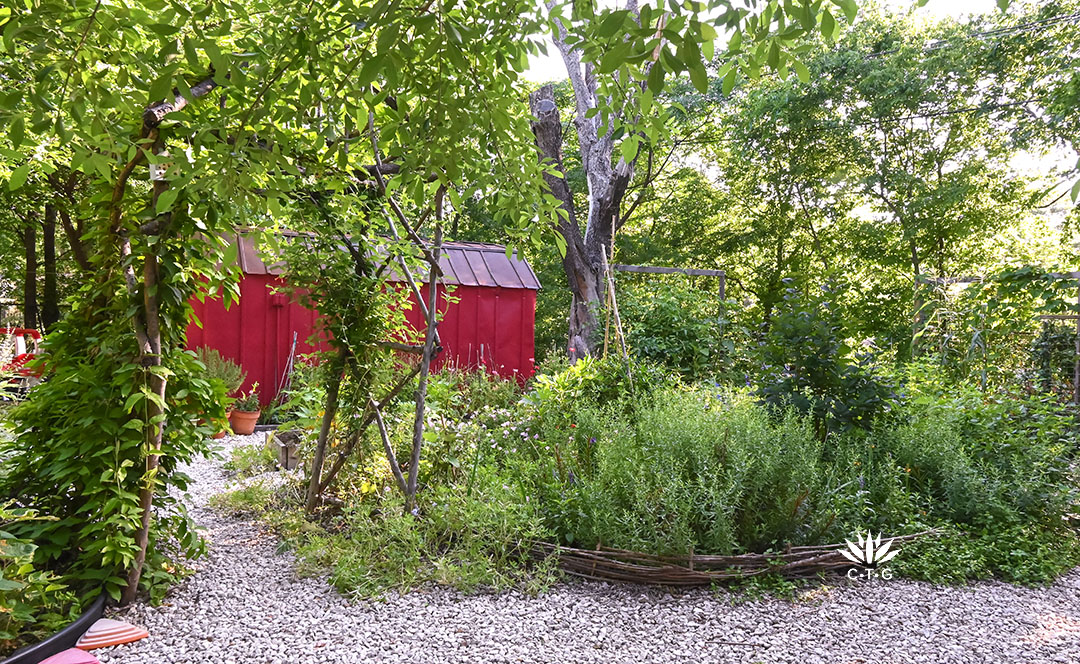
Their property, which backs up to the Cap Metro rail line, includes lots of hackberry trees, known for brittle branches that randomly break. The ice storm of February 2021 whacked many more. Richie used the windfall to build an arbor that formally connects the two island beds. A spring-blooming crossvine climbs up one side.
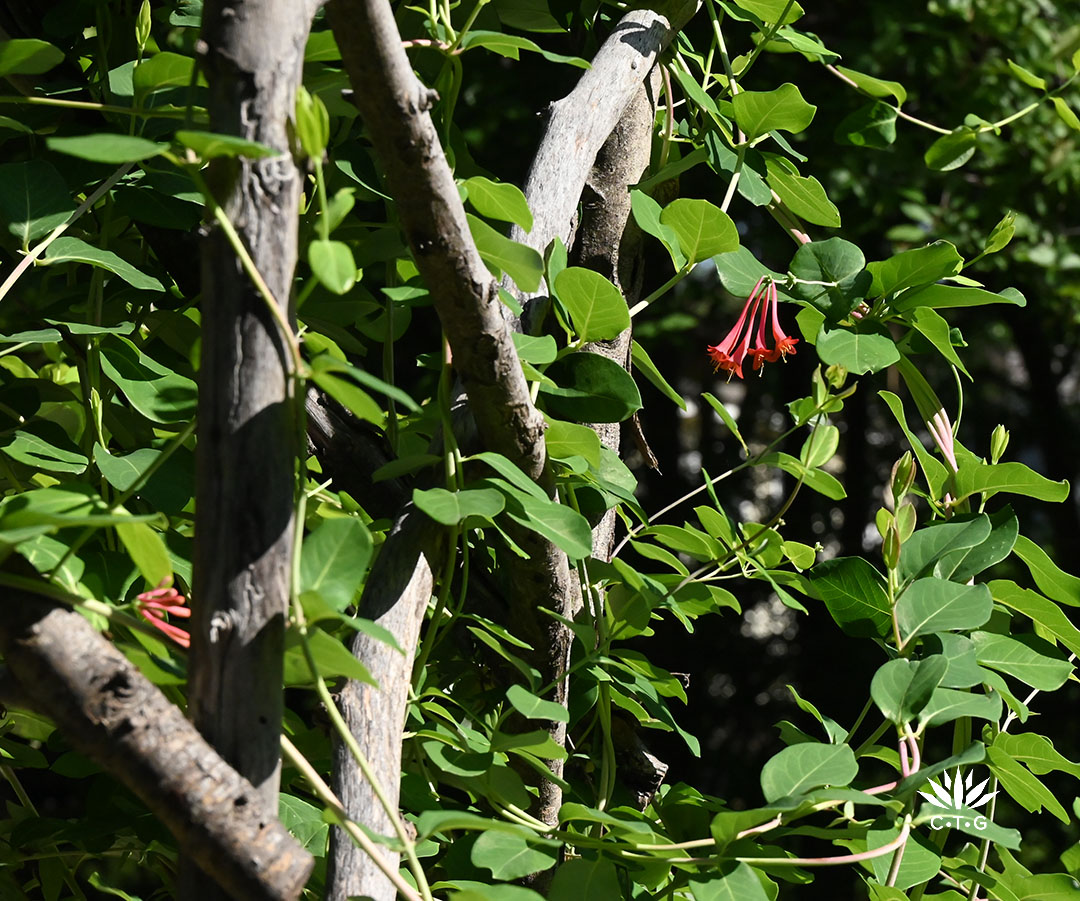
Twining coral honeysuckle encircles the other. Both native vines support hummingbirds.
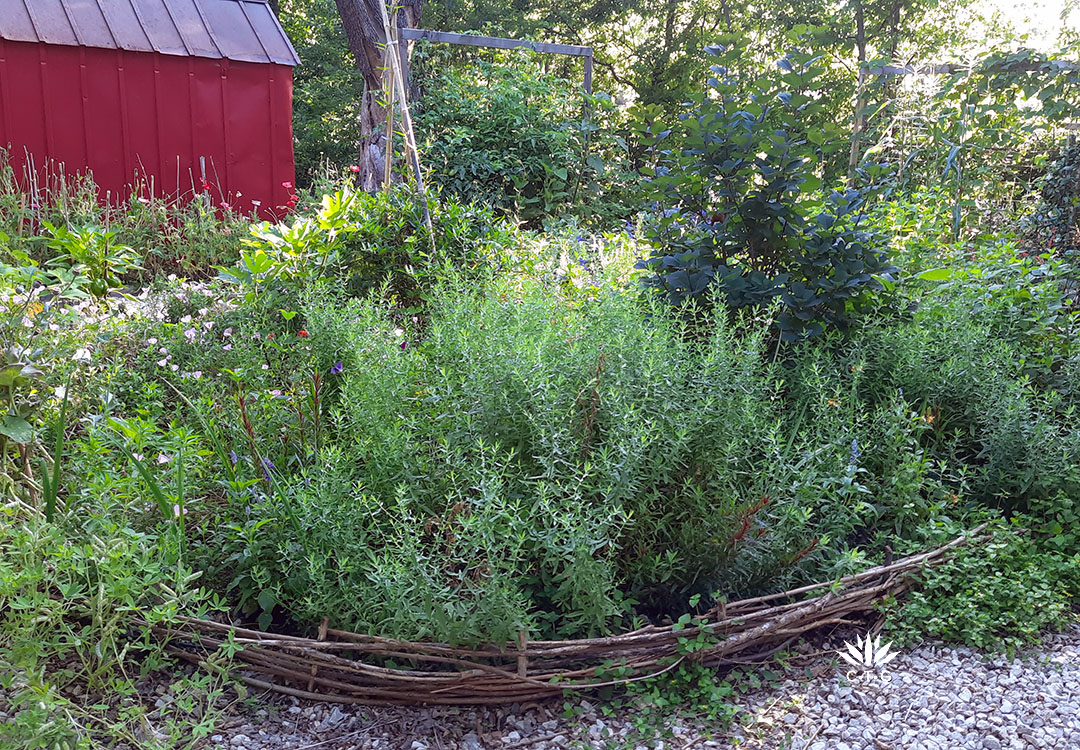
The storm left them with piles of twigs, too. Richie wove them into a miniature wattle fence to edge one island bed. “The hardest part about the wattle fence is just collecting the right material. And then once you get it, it’s quite fun actually, to put in the stakes and then start weaving,” he said.
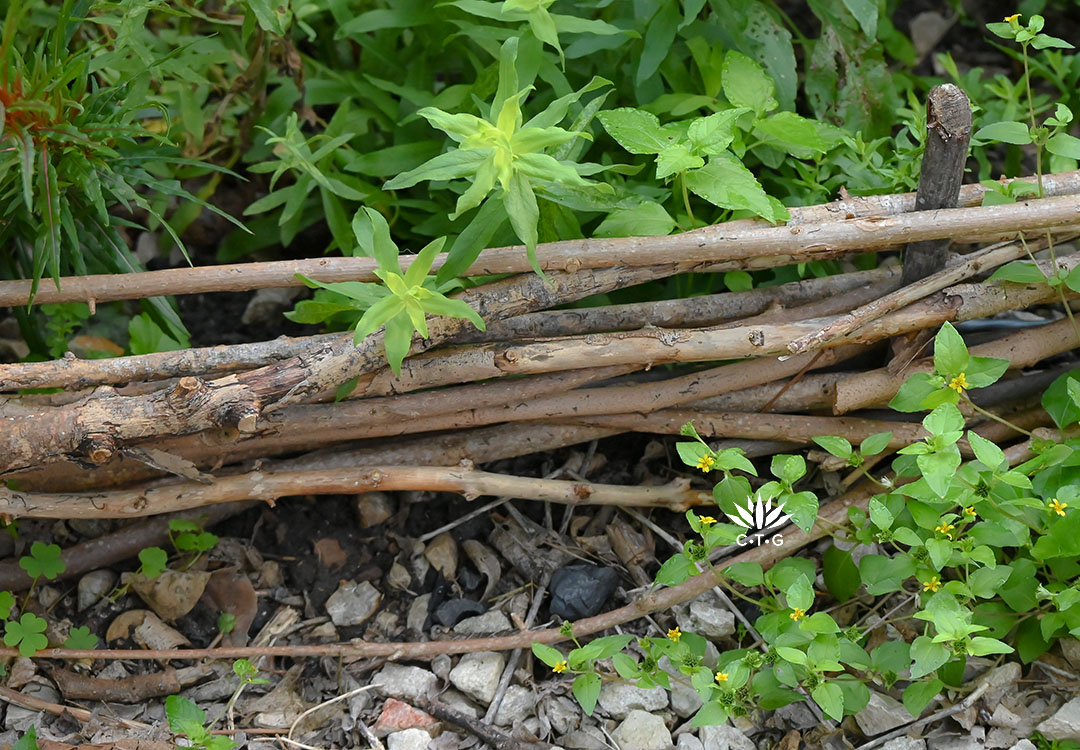
What a calming, intriguing way to spend an afternoon!
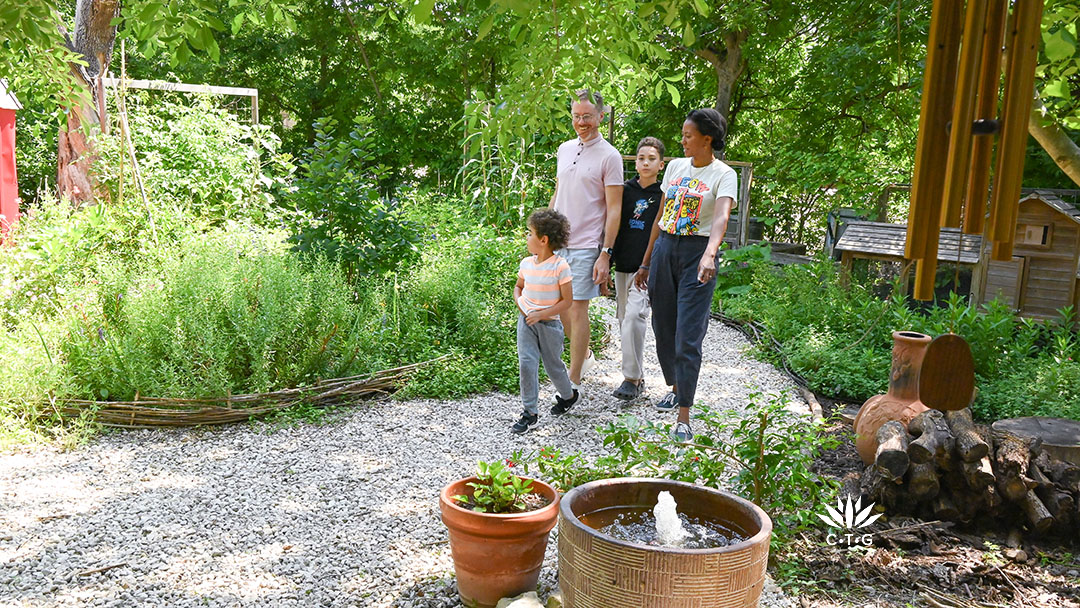
Nkiru lived in The UK for many years where the land around a house is referred to as a “garden,” not a “yard.” Richie noted, “So you’re already thinking in your head, this is a space I should be doing something in. Whereas ‘yard’ is basically a unit of measure. I feel like we’ve made the land into a commodity so much so we’re literally referring to it as a unit of measure that can just be sold interchangeably.”
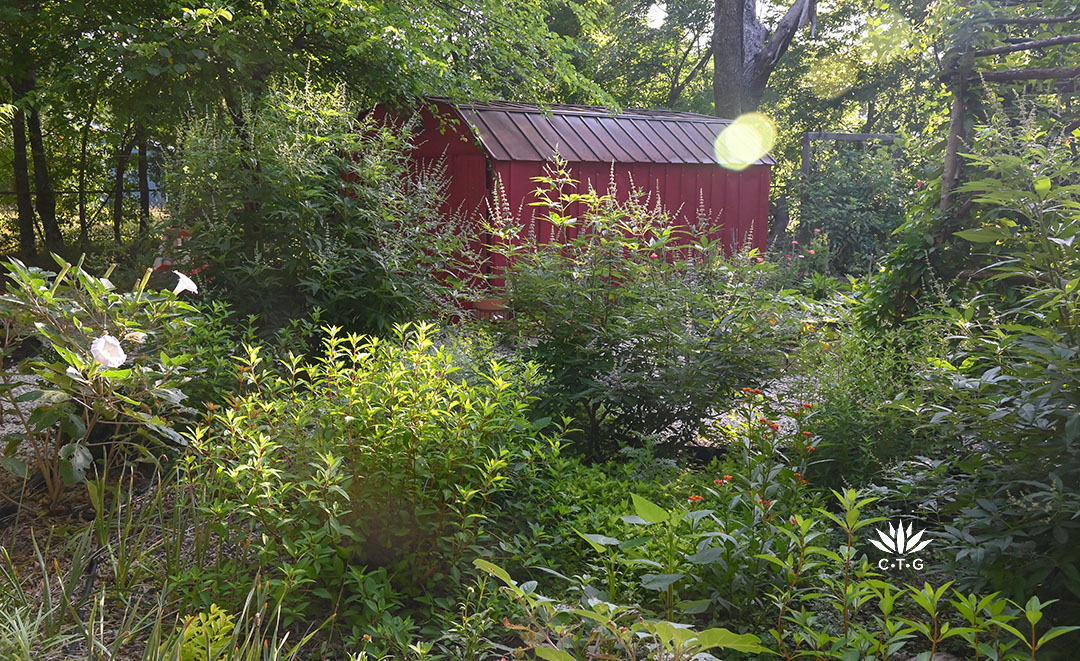
“What we’ve tried to do conceptually is we have formal aspects, I think, of English cottage garden style. But none of those plants,” added Nkiru. Along the way, they focused on plants that support habitat, including larval host plants like the datura and flame acanthus in this bed. Flowering and seeds across the seasons support pollinators and birds.
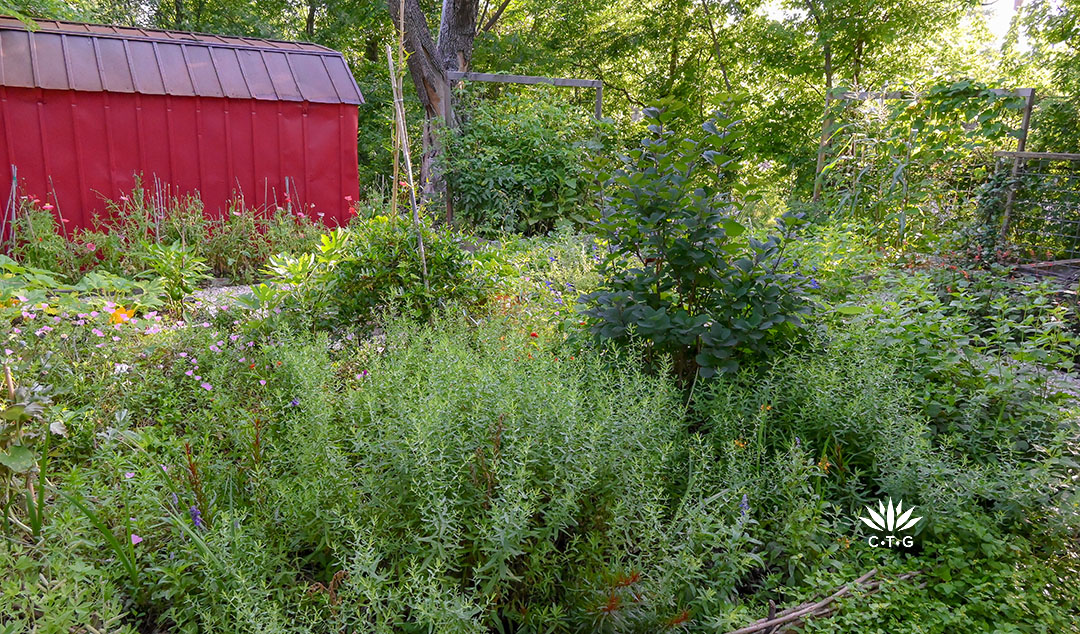
Like us all, they’ve racked up planting mistakes, but quickly learned to choose native and adapted plants that grow well in Central Texas. One valuable resource (along with CTG!) is the City of Austin’s Native and Adapted Landscape Plants guide. A smoke tree anchors this bed of aster, white mistflower, pink evening primrose and Salvia guaranitica ‘Black and Blue’.
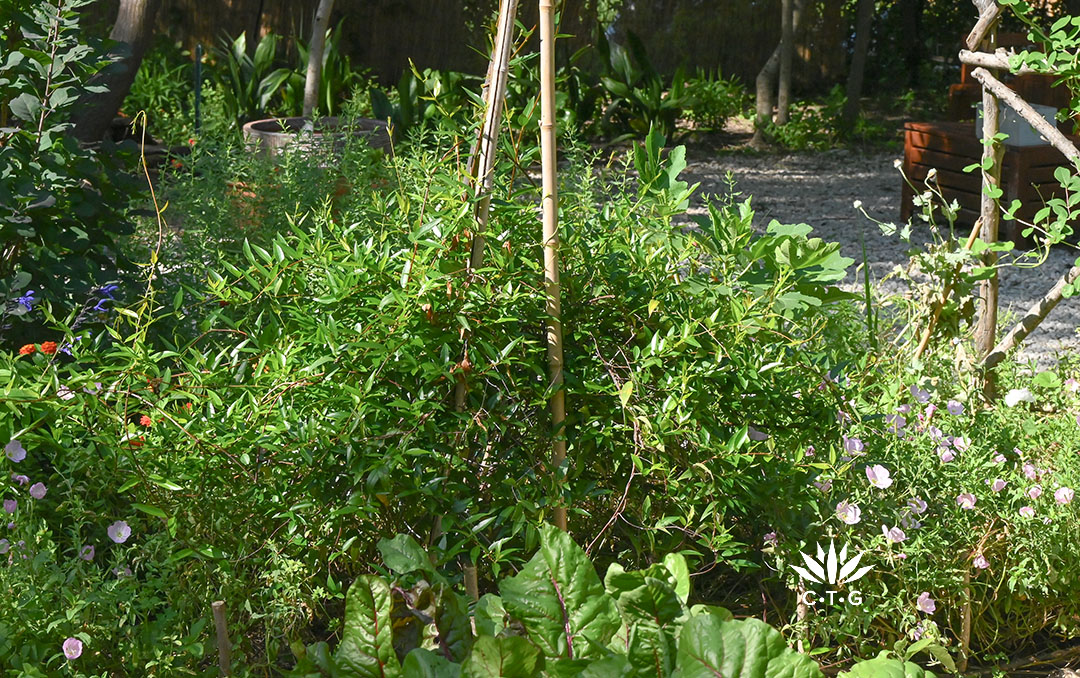
Native Carolina jessamine’s fragrant yellow flowers signal lots of pollinators in spring. This drought-tough evergreen vine will outgrow Richie’s quick tripod trellis in a few years, but I’m sure he’s already got a design in mind!
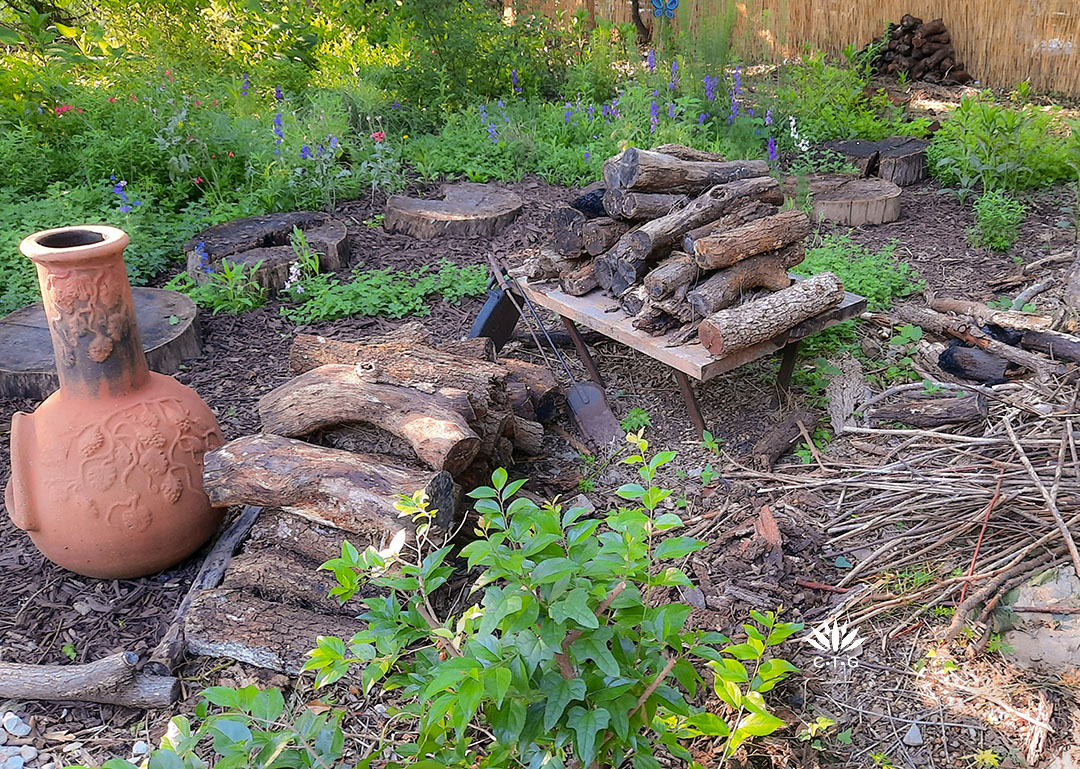
Intentionally, they leave leaf litter, logs, and twigs to renew habitat for lizards and the fireflies that increasingly enchant their summer nights.

They wanted spaces for their sons to explore and hide and frolic among the lizards they love to watch.
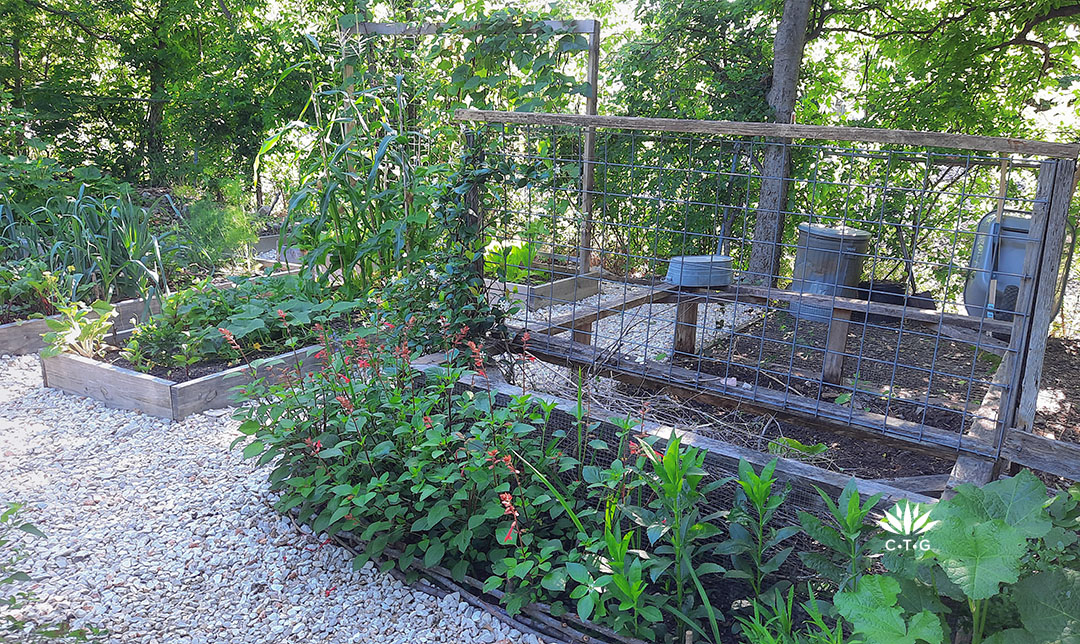
The leaves and the vegetables they compost also remind them all of the cycle of life. “We put those on the vegetable beds, then we get the vegetables and bring them in, and then whatever’s left over goes back into the compost. So it’s just sort of sustaining,” Nkiru noted.
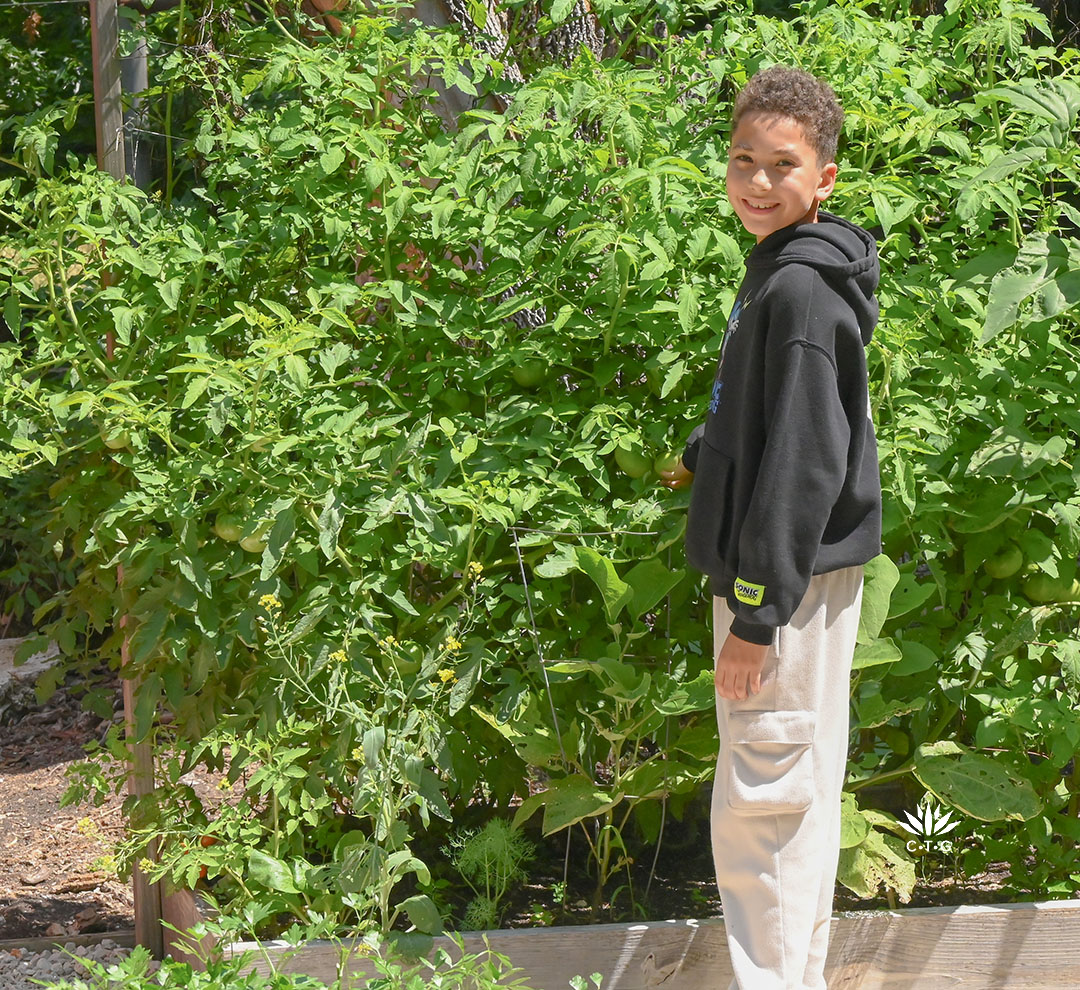
“And I’m happy they experience that change from winter to summer to spring and observe what is different,” she added. “You know that that is beneficial for them.”
Thank you to the entire Gelles family for such a fun and inspiring morning!
And thank YOU for stopping by to meet them! Linda
tags:

